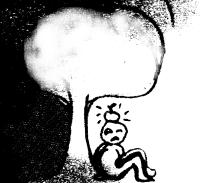Article,
Static conductivity of charged domain walls in uniaxial ferroelectric semiconductors
Physical Review B, 83 (23): 235313 (2011)
Abstract
By using Landau-Ginzburg-Devonshire theory, we numerically calculated the static conductivity of charged domain walls with different incline angles with respect to the spontaneous polarization vector in the uniaxial ferroelectric semiconductors of n type. We used the effective mass approximation for the electron and hole density of states, which is valid at an arbitrary distance from the domain wall. Due to the electron accumulation, the static conductivity drastically increases at the inclined head-to-head wall by 1 order of magnitude for small incline angles θ ∼ π/40 and by 3 orders of magnitude for the perpendicular domain wall (θ = π/2). There are space-charge regions around the charged domain walls, but the quantitative characteristics of the regions (width and distribution of the carriers) appear very differently for the tail-to-tail and head-to-head walls in the considered donor-doped ferroelectric semiconductor. The head-to-head wall is surrounded by the space-charge layer with accumulated electrons and depleted donors with the same thickness (∼40−100 correlation lengths). The tail-to-tail wall is surrounded by the thin space-charge layer with accumulated holes with thicknesses of ∼5–10 correlation lengths, a thick layer with accumulated donors with thicknesses of ∼100−200 correlation lengths, as well as the layer depleted by electrons with thicknesses of ∼100−200 correlation lengths. The conductivity across the tail-to-tail wall is at least an order of magnitude smaller than the one for the head-to-head wall due to the low mobility of the holes, which are improper carriers. The results are in qualitative agreement with recent experimental data for LiNbO3 doped with MgO.
